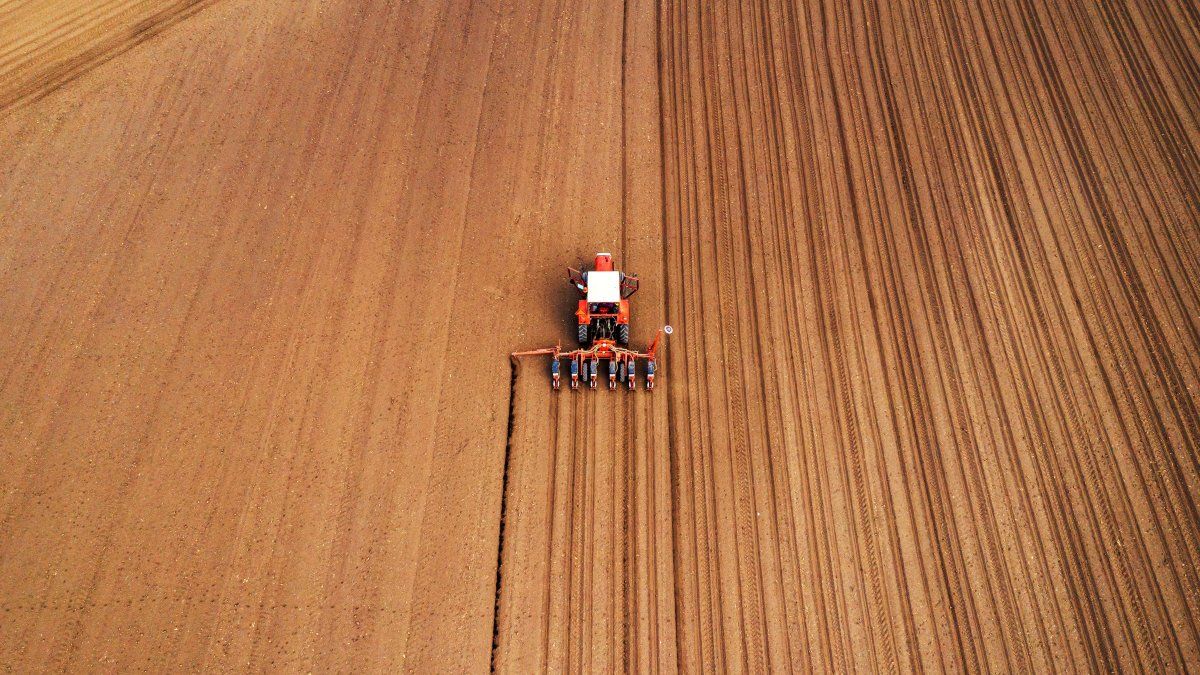October is a key month for Argentina from a productive, economic and therefore political point of view, because Sowing of the thick campaign begins, which generates the dollars that define the short term of the economy. By this time, the routes should begin to be blocked with contractors circulating with the seeders, but for that rains are needed.
Nobody likes to have machines in the shed, but the truth is that Most productive regions do not have the necessary humidity to begin crop implementation. The concern is great, because after October 20, each day of delay in sowing is paid for with yields.
It is true that we still have to reach the last part of the month and that there are unstable conditions in a large part of the agricultural areas, but the problem is that there are no forecasts of abundant rains and those that have already been recorded did not satisfy the producers or the advisory agronomists. Nobody wants (nor should) sow without water, since this stage is absolutely sensitive: everyone knows that the grain filling period is important, but sowing is also important.
Regarding the prospects for this soybean campaign, the head of the Soybean Chain Association (ACSOJA), Rodolfo Rossi, assured Scope that “because of everything that is happening with corn, it is likely that a little more area will be added compared to what we estimate. If one goes from the north to the center, the intention to plant corn decreases. There are very high percentages in the drop in planting intention in areas where corn had grown a lot, such as Chaco, Santiago del Estero, Tucumán or Salta, where there was a strong penetration of corn to make the cycle more sustainable. In those areas the drop would be 70% and the percentages fall as we approach the central area. If this did not happen, the soybeans would not reach the 19 million hectares of planting intention.”
Another problem that must be overcome in this campaign is the quality of the seeds. The latest droughts wreaked havoc on the plots dedicated to the production of this basic input that – through their own use – thousands of producers save to face the next cycle.
Regarding this point, the Association of Private Agricultural Laboratories (ALAP) has just issued a report in which it confirms that – after carrying out a preliminary analysis – the germination power of the soybean samples analyzed from March 1 to March 10 September is 76.4% versus 85.1% observed in 2023. This means that, as a result of the high number of pathogens, the germination power is low and that an extra investment must be made to improve it.
Added to the problems already mentioned is the lack of rain, which not only has a strong impact on yields but also on technological investment when implementing the crop. According to Rossi, “when there is not so much probability of water, the producer rethinks the investment in technology, because he thinks that if he is not going to reach a certain yield thanks to the rainfall, it does not make sense to invest based on a scenario that is not going to happen. achieve”.
What happens in climate matters (not only in Argentina) will mark the price trend in the international market. In recent weeks there have been improvements in the value of grains but also falls.
According to Rossi, “the 33% tax on export duties on soybeans cannot be tolerated anymore. Our competitors are with their engines running and although at these prices it is also difficult for them to find good returns, the United States and Brazil favor soybeans over corn. Next year we will have more than 420 million tons of soybeans globally (not so long ago there were 150, 180 million), meaning that production has doubled in the last 20 years and demand has always continued with China as the main player. . We must not forget that in soy we compete with the world and that within Argentina with the withholdings we have areas that are going out of business or that have to do wonders to continue.
The campaign will be very challenging and with multiple fronts to fight, including those linked to international prices. In his latest report, Enrique Erize, head of Novitas Consulting, highlighted that “after the September rebound, Chicago showed some adjustments as it seeks its level with market factors acting in antagonistic ways. After the announcement of lower interest rates in the US, the funds eased their downward pressure and leveled their positioning, allowing a certain recovery in prices. Furthermore, the change in climate forecasts for South America, now with more encouraging rains, once again generated a more expectant market and prices with a once again erratic direction” and detailed that “the weather in South America will be a key factor to monitor in the coming weeks.” .
According to Erize, “the soybean market presents the most complicated scenario for the new campaign. The American harvest can already be said to be a record while playing against the weather in Brazil is reckless. The core area in said nation (Mato Grosso, Goiás and Mato Grosso do Sul) usually receives more than 2000 mm of rain between September and March. In fact, they are already arriving and the forecasts are good. To complete the complex panorama for 2025, the soybean area in our country will grow strongly.” A lot of soybeans in the world, low prices and drought in Argentina, is not a good formula.
Every year, producers have to take into account more and more variables to make million-dollar economic decisions that are ultimately defined by the amount of water that falls from the sky. As of today, the only thing that can make the situation reverse is a good rain of more than 100 mm enough to change the mood of the producers, reactivate the sale of fertilizers and put the contractors’ scaffolding back into operation. that they should begin to go out on the roads to advance with the planting of the most important crop that Argentina has. If that happens it would be a great productive explosion.
Source: Ambito
David William is a talented author who has made a name for himself in the world of writing. He is a professional author who writes on a wide range of topics, from general interest to opinion news. David is currently working as a writer at 24 hours worlds where he brings his unique perspective and in-depth research to his articles, making them both informative and engaging.




